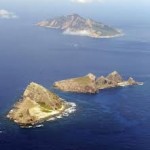This is not news, but it, too, is reality. (A tip o’ the cap to Peter Trueman – and how’s that for the name of a news reporter? – who finished off his nightly Global TV newscasts way back when with a commentary, which always ended with a similar line.) I’m thinking, again, this morning of Canada’s Truth and Reconciliation Commission. Its work is done. Its recommendations are out there. Many a heart-tugging reminiscence has been aired, stories of the often-bitter legacy of Canada’s residential schools for Aboriginal children and youth. And as is the way of modern life, we are on to other things, most of us.
Just for this quotable minute, let’s remember. First, while I’m tipping my invisible fedora, I want to remember Desmond Tutu. As I understand it, he was the key mind behind South Africa’s origination of the “Truth and Reconciliation” concept, which has built into it not only the idea of an unblinkered and fearless gaze at the rancid facts of his country’s racialist history, but also this notion: look, we all have to live here together, and we’ll stay sick, slaves to the past, if we don’t forgive. That’s what the congregation of the Charleston Emmanuel church have (again) taught us in the aftermath of murder: that forgiveness is not some spineless absolution of another’s evil, but a courageous and hard-won insistence on clearing one’s heart of the barnacles of vengeance and the chains of hate. Tutu was a churchman. He knew and preached that Christ’s call to forgive must harmonize with the cry for justice. I’m glad we had the wisdom, however imitative, to call the Canadian investigation into our earlier policies of de-culturalization the Truth and Reconciliation Commission. It’s a mighty marriage of mutually reinforcing principles. Hurray for us.
Many truths have been told. However, I’m not sure that reconciliation has been advanced much. There is greater awareness. Awareness is good. There is greater understanding and real sympathy, but it won’t take too many Aboriginal protests that infringe on suburban Canadian complacency to erode that. (I’m from Caledonia. Uneasy lie the heads of those on opposite sides of racially stained land disputes.) Still, I’m hopeful that the work of Justice Murray Sinclair and his Commission is a watershed moment in the history of Canada’s movement toward greater harmony and equality among our founding peoples and all the boat people, wagon people, car and airplane people that have joined them on this favoured hunk of Earth.
In a June 6 interview that bears re-reading, Justice Sinclair made a point that still echoes. Speaking to writer John Ibbitson, but through him to all Canadians of Anglo-French and other European backgrounds, he offered a particular and ominous reason for getting right the relationship with the Aboriginal peoples of Canada.

